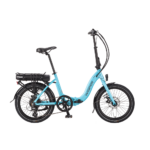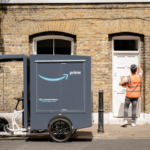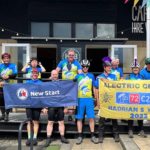Hello All,
I like riding fixed gear bikes (one gear, no freewheel), though I am not some kind of purist "fixie nutter". It occurred to me that a lightweight electric boost system would be the just the ticket for getting away from traffic lights and helping out on steeper hills. The assistance would let me run a higher gear than otherwise for easy cruising and faster descending.
I would be after a range of 15-20 miles, contributing a fair amount of effort.
The Cytronex system looks like it might be just the job - I understand that they might be offering a kit soon? Of course, no pedelec sensor would be strictly necessary - the pedals must be turning if the bike is moving anyway.
Feel free to think I am mad but I would really welcome your suggestions.
Chris
I like riding fixed gear bikes (one gear, no freewheel), though I am not some kind of purist "fixie nutter". It occurred to me that a lightweight electric boost system would be the just the ticket for getting away from traffic lights and helping out on steeper hills. The assistance would let me run a higher gear than otherwise for easy cruising and faster descending.
I would be after a range of 15-20 miles, contributing a fair amount of effort.
The Cytronex system looks like it might be just the job - I understand that they might be offering a kit soon? Of course, no pedelec sensor would be strictly necessary - the pedals must be turning if the bike is moving anyway.
Feel free to think I am mad but I would really welcome your suggestions.
Chris






